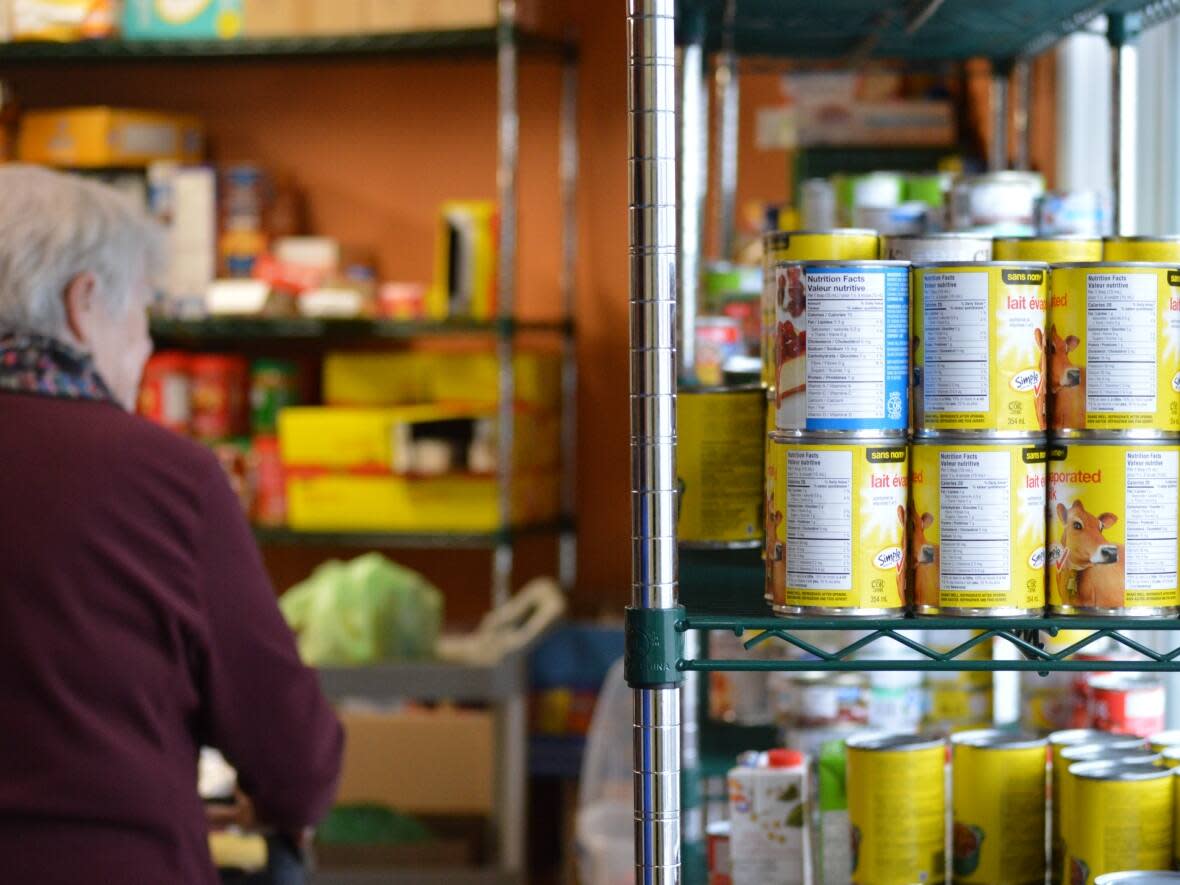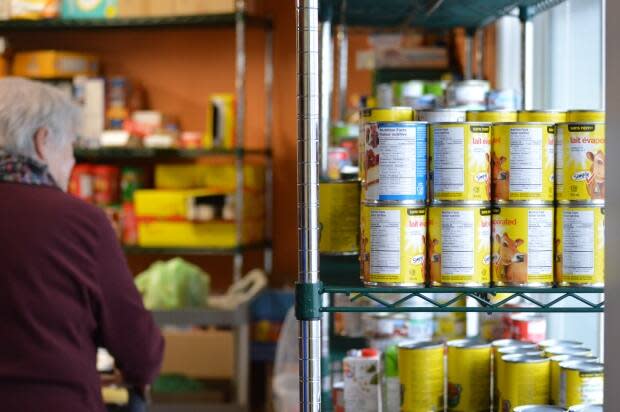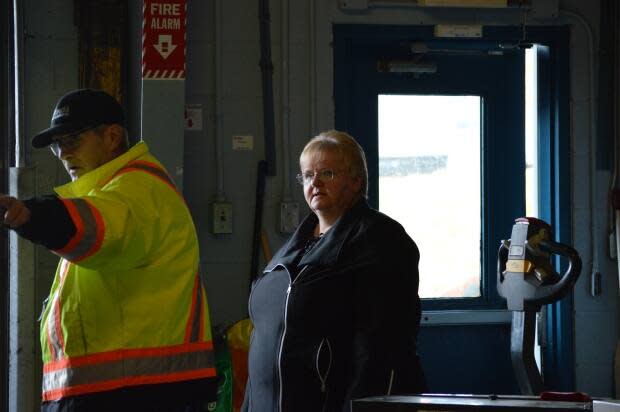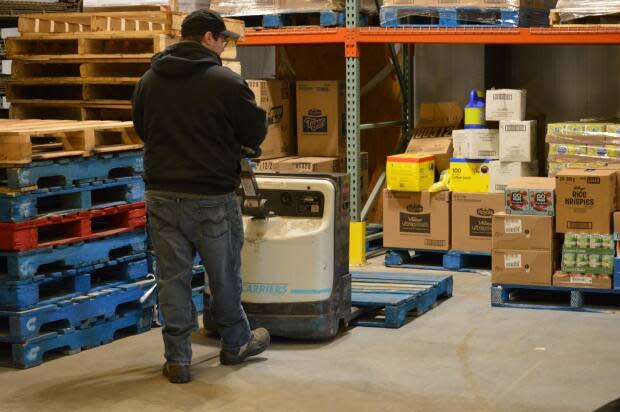As inflation causes record hunger, here's how donated food gets to tables across N.L.


Tina Bishop cranes her neck, staring up at the crates and pallets towering above her. The warehouse she's standing in is full — for now.
In a couple of weeks, she says, the stacks of food on shelves at the Community Food Sharing Association warehouse will dwindle away once again.
Bishop, the association's director, has just spent $110,000 on essential food items. Canned tomatoes, boxes of pasta and rows upon rows of Heinz beans surround her. It goes fast, she says. Especially these days.
Two part-time warehouse workers move boxes to the front door, where vans and trucks from food banks across the province — a network of 56 charities — wait their turn to load up for the week.

Bishop, like others in her line of work, feels the tension. Inflation means fewer people are donating, their wallets already stretched just to put food on their own tables. Whatever cash the association does get, meanwhile, buys less food. And at the same time, more people are using food banks than ever before.
The demographics have changed, too.
"A lot of low-income working families are now having to turn to food banks," Bishop says. Seniors are relying on them more heavily, as well. It gets worse in the winter, when heat bills rise.
"I can honestly say," Bishop says, "the demand has never been high like this."

Hunger now affects a rapidly growing population across Canada, according to Food Banks Canada. The number of people visiting a food bank has gone up by 35 per cent nationally since 2019. In Newfoundland and Labrador, in the past year alone, it's up 27 per cent.
From Surrey, B.C., to Hamilton, Ont., demand is outpacing supply.
Bishop gets cash and donated food from a medley of big companies, individual contributions and Food Banks Canada itself. Large grocers, such as Sobeys and Loblaw, sometimes offer up whatever they can't sell.
In an average year, the association will gather up and distribute more than three million kilograms of food, worth $17 million. More than 10,000 Newfoundlanders and Labradorians avail of that charity to keep them alive.
The volunteers and food bank staff now loading up their trucks, on a frigid November morning, will take the boxes of food to church basements and community centres from Marystown to Twillingate.

There, they'll sort the food into hampers, and those hampers — one per month — will end up in the hands of people struggling to buy even the basics. There's only enough food in them to last one person three or four days. Food banks simply don't have enough to offer more.
The provincial government has begun handing out one-time-only $500 cost-of-living cheques to help offset skyrocketing food prices, but Bishop says that only goes so far.
"The $500 is certainly a help to the families in need right now, but we do have to look at the long-term effects of the increased cost of food and fuel," she says.
"We're hoping that government will help out.… If this trend continues, what we're seeing right now, I don't know how food banks would even be able to keep up with the demand."
Your generosity helps brighten the holiday season for families across the province. Support your local food banks by making a donation online at www.cbc.ca/feednl.
Donations will be accepted until midnight on Dec. 31.


 Yahoo Movies
Yahoo Movies 
